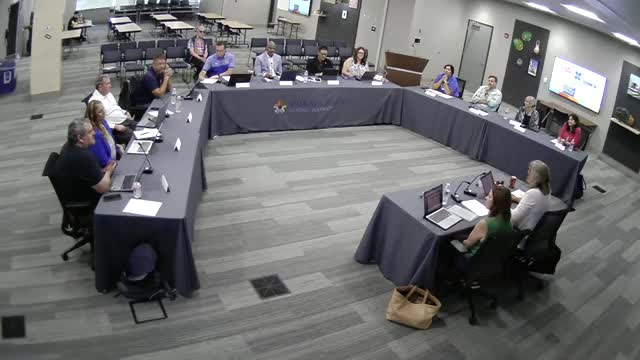Community rallies for state of the art school facilities
August 29, 2024 | Shawnee Mission Pub Sch, School Boards, Kansas
This article was created by AI summarizing key points discussed. AI makes mistakes, so for full details and context, please refer to the video of the full meeting. Please report any errors so we can fix them. Report an error »

During a recent government meeting, officials discussed the importance of effectively communicating the rationale behind school facility upgrades and new constructions to the community. The conversation highlighted the need to present information in a way that is accessible to all, particularly younger audiences, to ensure understanding and support for budgetary decisions.
Participants emphasized the significance of linking budget discussions to the direct impact on students' classroom experiences. By framing financial decisions around the benefits to students, officials believe they can foster greater community engagement and support for future initiatives. One member noted the effectiveness of using relatable language, suggesting that if a spouse can understand the material, it is likely that the broader community will as well.
The meeting also touched on the importance of a bottom-up approach in identifying building needs, with school-based assessments driving decision-making. This method allows for a clearer understanding of specific issues faced by individual schools, which can then be communicated to the community.
A recurring theme was the necessity of transparency regarding the costs associated with maintaining older buildings versus investing in new constructions. Officials argued that while retrofitting may seem cost-effective, the long-term benefits of new facilities—such as improved learning environments and community pride—should be emphasized. They pointed out that quality school buildings are not only essential for student success but also serve as a significant factor in attracting families to the community.
The discussion concluded with a consensus on the value of community involvement in the planning process. By inviting residents to tour new facilities and witness the improvements firsthand, officials believe they can build trust and support for future projects. Overall, the meeting underscored the critical role of effective communication and community engagement in shaping the future of educational facilities.
Participants emphasized the significance of linking budget discussions to the direct impact on students' classroom experiences. By framing financial decisions around the benefits to students, officials believe they can foster greater community engagement and support for future initiatives. One member noted the effectiveness of using relatable language, suggesting that if a spouse can understand the material, it is likely that the broader community will as well.
The meeting also touched on the importance of a bottom-up approach in identifying building needs, with school-based assessments driving decision-making. This method allows for a clearer understanding of specific issues faced by individual schools, which can then be communicated to the community.
A recurring theme was the necessity of transparency regarding the costs associated with maintaining older buildings versus investing in new constructions. Officials argued that while retrofitting may seem cost-effective, the long-term benefits of new facilities—such as improved learning environments and community pride—should be emphasized. They pointed out that quality school buildings are not only essential for student success but also serve as a significant factor in attracting families to the community.
The discussion concluded with a consensus on the value of community involvement in the planning process. By inviting residents to tour new facilities and witness the improvements firsthand, officials believe they can build trust and support for future projects. Overall, the meeting underscored the critical role of effective communication and community engagement in shaping the future of educational facilities.
View full meeting
This article is based on a recent meeting—watch the full video and explore the complete transcript for deeper insights into the discussion.
View full meeting
